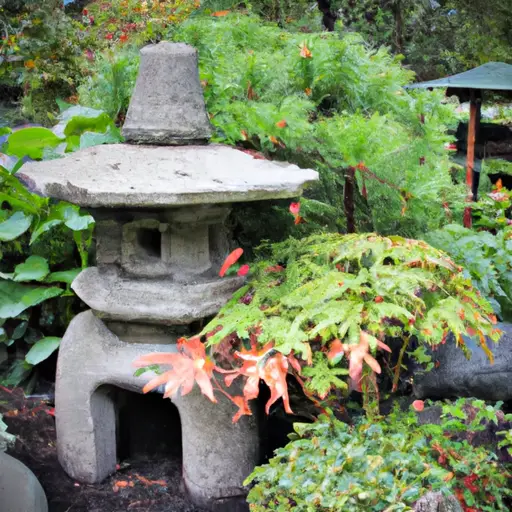Finding Solace in Nature’s Beauty through Serene Japanese-style container gardens
In the hustle and bustle of modern life, it’s crucial to find moments of calm and tranquility. One way to achieve this is by creating a serene Japanese-style container garden. These miniature landscapes offer a sense of solace and harmony, allowing individuals to connect with nature and find peace within their surroundings. Whether you have limited space or simply want to bring a touch of Zen into your home, creating a Japanese-style container garden can transport you to a world of peace and beauty.
Japanese gardens have been admired for centuries for their minimalist design principles and ability to evoke a sense of tranquility. The small-scale versions known as “tsubo-niwa” or container gardens, allow individuals with limited space or urban dwellers to embrace this aesthetic in their own homes. These gardens typically consist of carefully selected elements and feature an intentional balance between nature, human elements, and the passage of time.
To create your own Japanese-style container garden, it’s essential to understand the key components that contribute to its serene ambiance. One crucial element is the use of stones or gravel, which symbolize water bodies like ponds or rivers. These stones are carefully chosen for their shape and texture, reflecting the natural forms found in traditional Japanese gardens. Placing these stones thoughtfully throughout your container garden can create a sense of depth and provide a meditative focal point.
Another key component is the incorporation of plants that thrive in harmony with one another. The principles behind these gardens emphasize simplicity and balance. Consider selecting plants such as bonsai trees, mosses, ferns, or bamboo that can be artfully arranged within your containers. Each plant should be chosen based on its visual appeal but also its ability to complement other elements within the garden.
The arrangement within a Japanese-style container garden should evoke a sense of asymmetry while maintaining balance. In traditional Japanese aesthetics, this concept is known as “fukinsei.” Creating an unbalanced but harmonious composition reflects the imperfections found in nature and emphasizes the garden’s connection to the surrounding environment. Play with different heights, textures, and colors to achieve a visually pleasing arrangement that feels natural and organic.
Beyond the physical elements, paying attention to the intangible aspects of your container garden is essential. Japanese gardens often incorporate elements of spirituality and reflect a desire to connect with nature on a deeper level. To capture this essence, consider adding features such as a small water basin or bamboo fountain, which can bring the soothing sound of trickling water into your space. These additions not only enhance the meditative atmosphere but also promote a sense of tranquility and relaxation.
Maintaining your Japanese-style container garden is another critical component in finding solace in its beauty. Regularly tending to your plants and ensuring their health contributes to the overall ambiance. Take time each day to care for your garden by watering, pruning, and removing any dead leaves or debris that may distract from its serene qualities. Engaging in these activities can become a form of meditation itself, allowing you to connect with nature while finding inner peace.
Creating a serene Japanese-style container garden is not limited to outdoor spaces; it can be brought indoors as well. Apartment dwellers or those without access to outdoor areas can still experience the tranquility of these gardens by incorporating them into their living environments. Placing miniature versions of these gardens on windowsills or coffee tables can transform your indoor space into an oasis of calm amidst the chaos of daily life.
In conclusion, finding solace in nature’s beauty through serene Japanese-style container gardens offers a pathway to inner peace and tranquility. These miniature landscapes allow us to escape from our busy lives and connect with nature on a personal level. By carefully selecting elements such as stones, plants, water features, and maintaining our gardens diligently, we can create a miniaturized version of Japan’s stunning landscapes within our own homes. Embracing the principles of simplicity, asymmetry, and balance, these gardens become a gateway to finding serenity in nature’s embrace. So why not embark on the journey of creating your own Japanese-style container garden and find solace amidst the beauty of nature?














